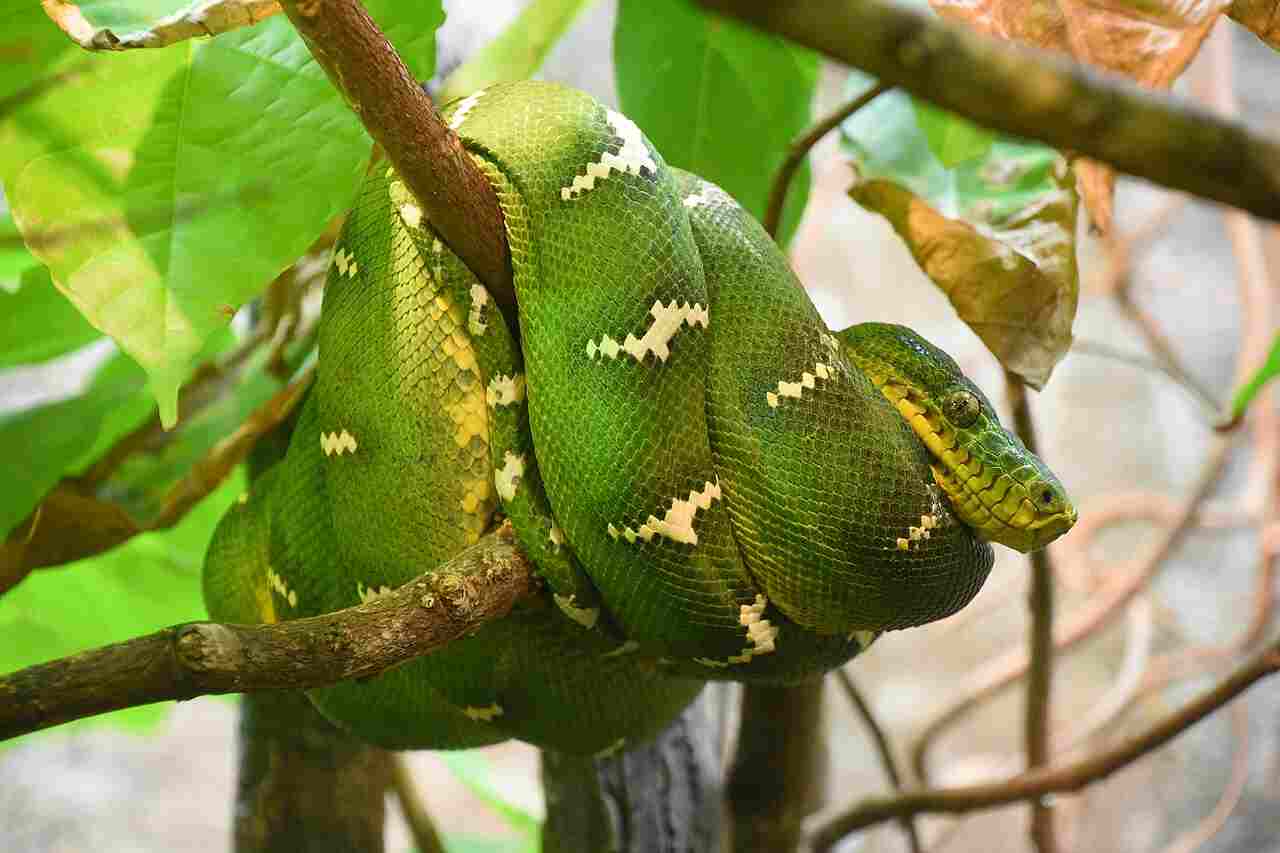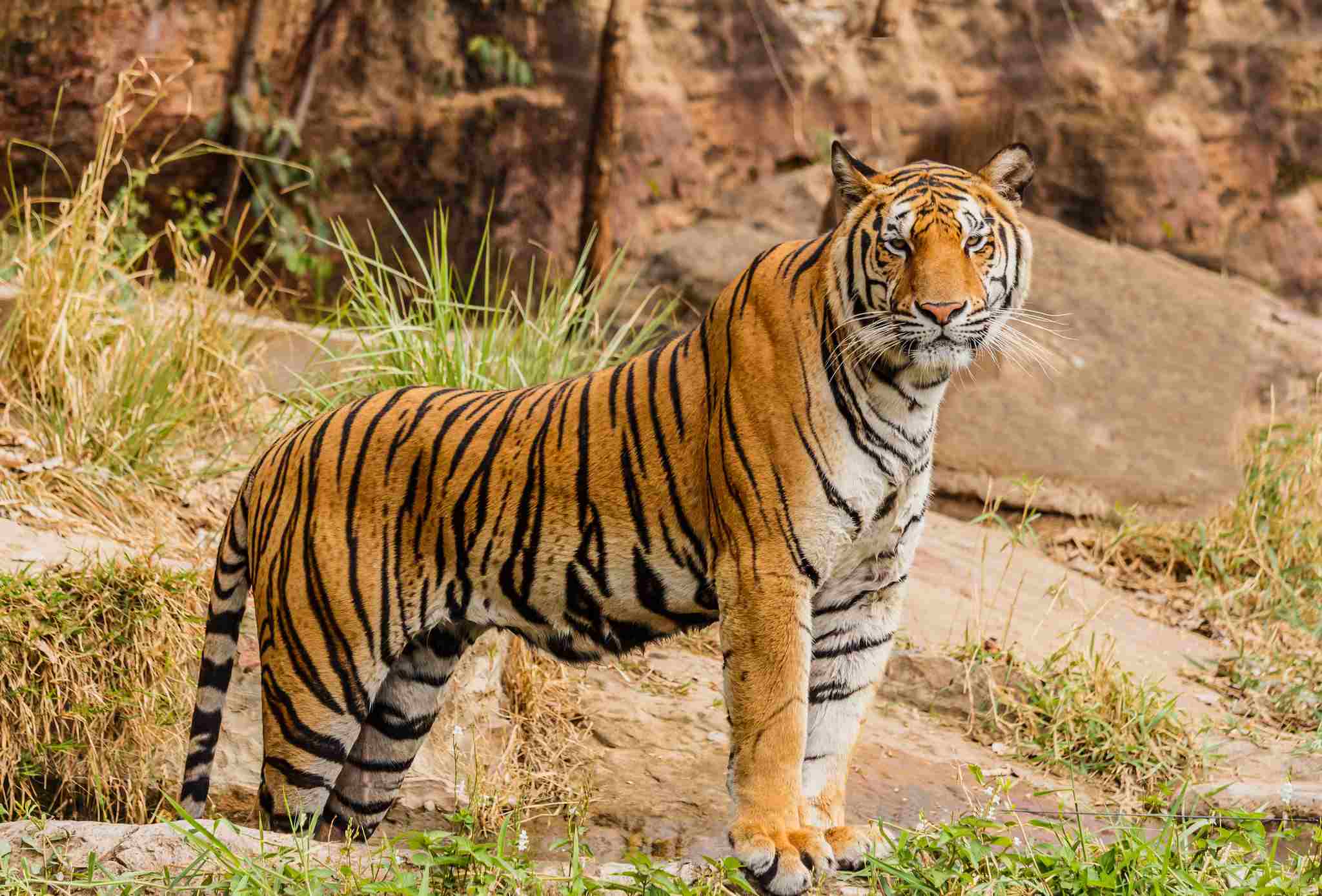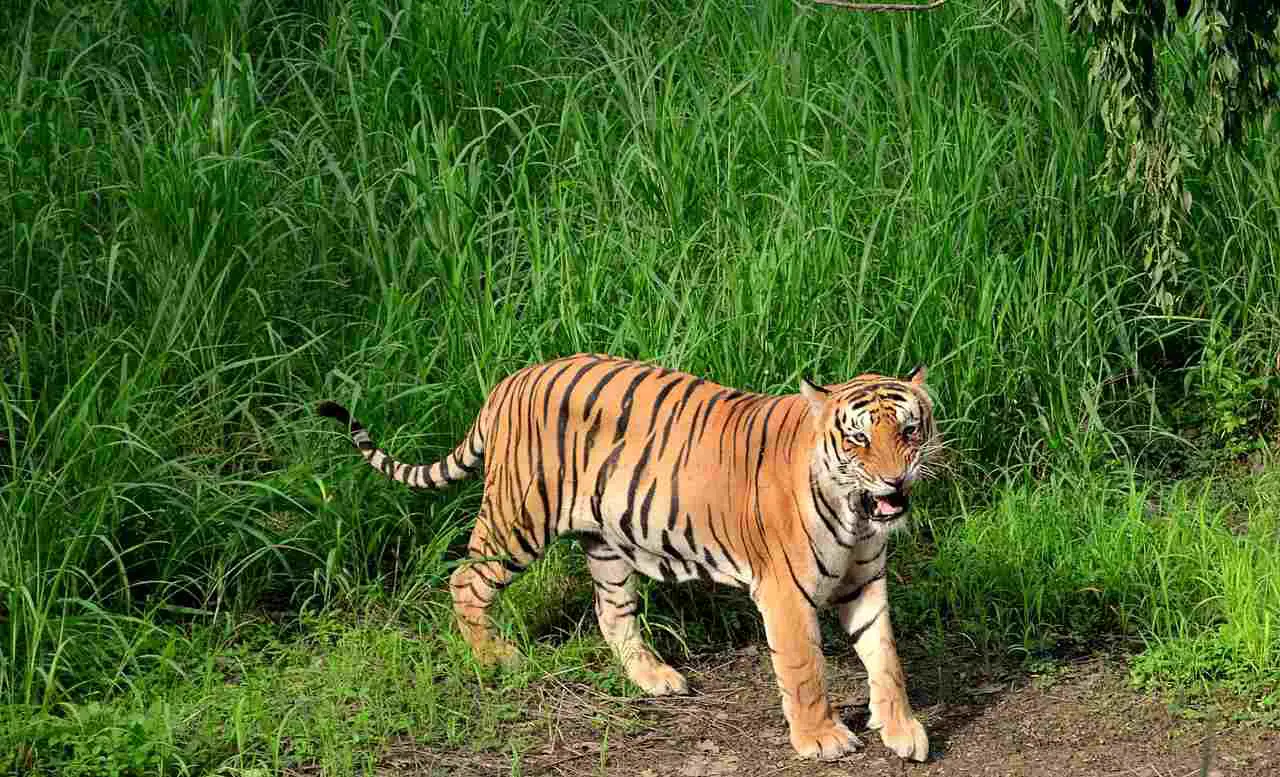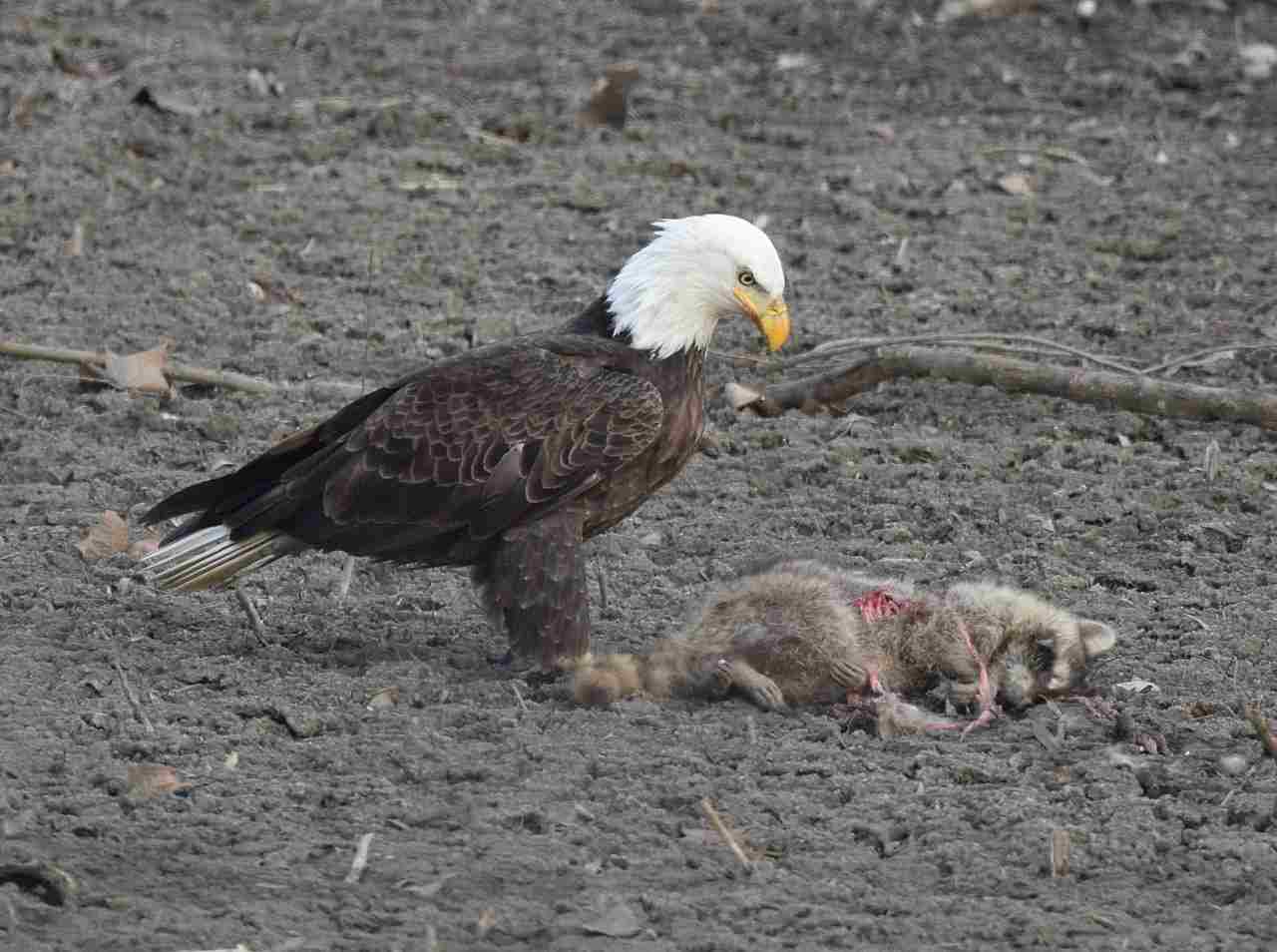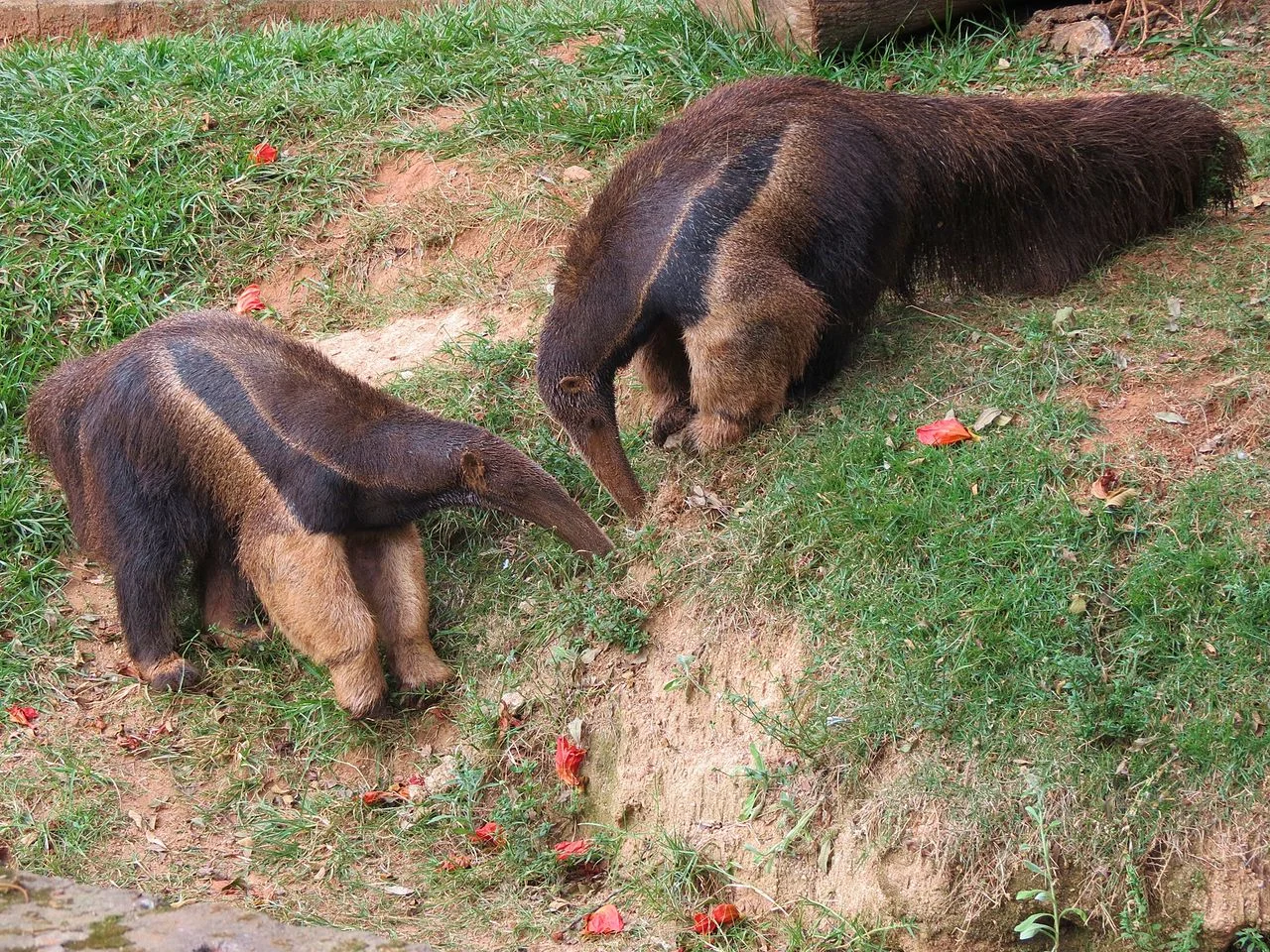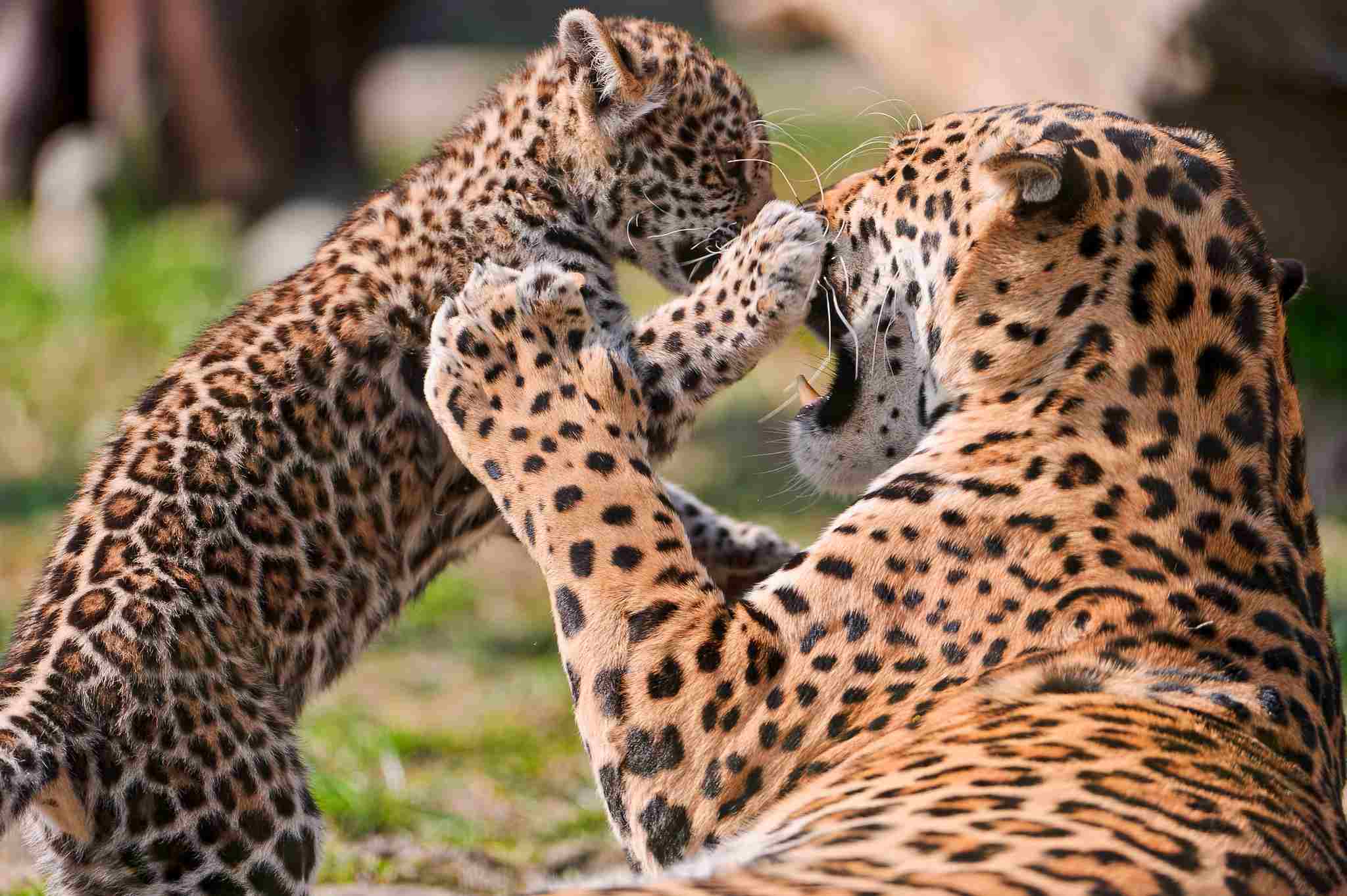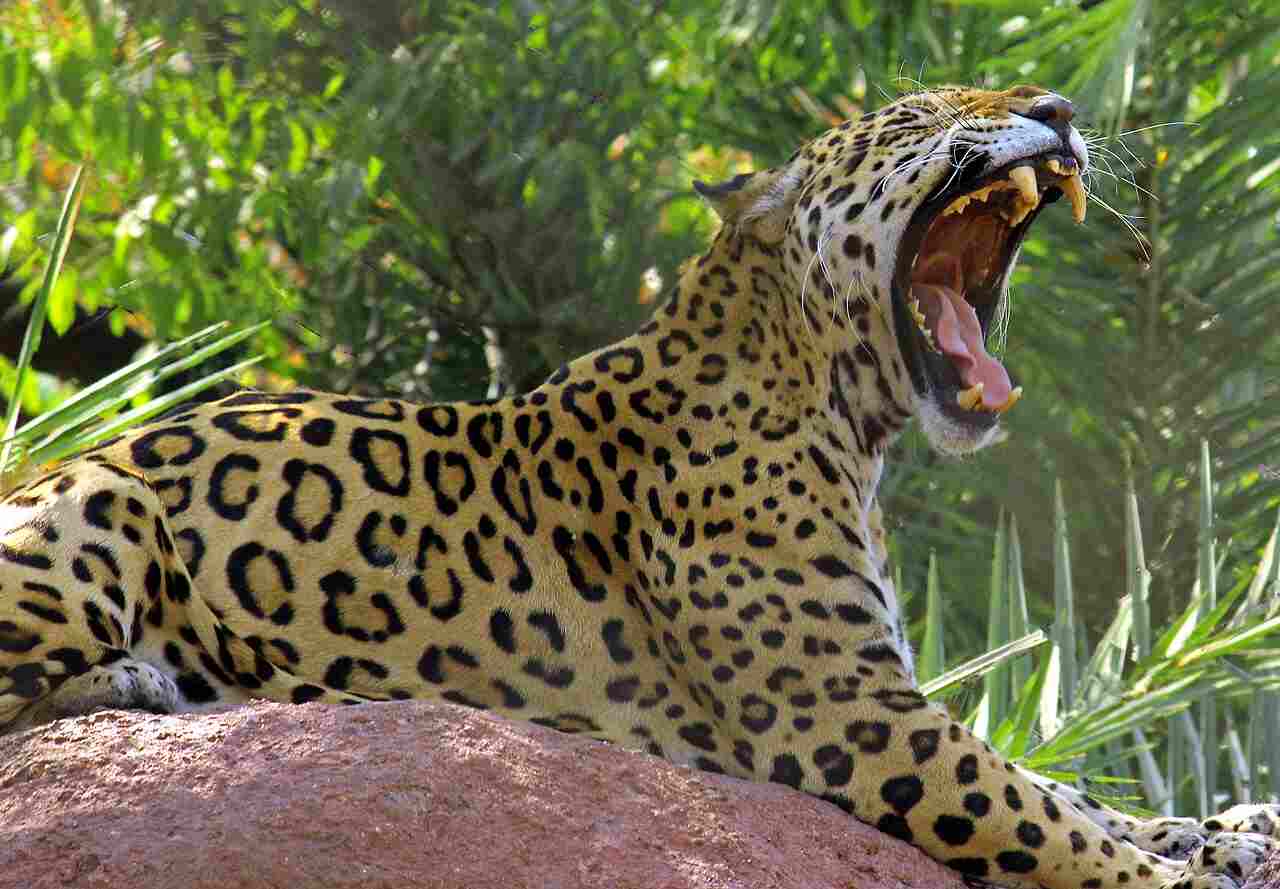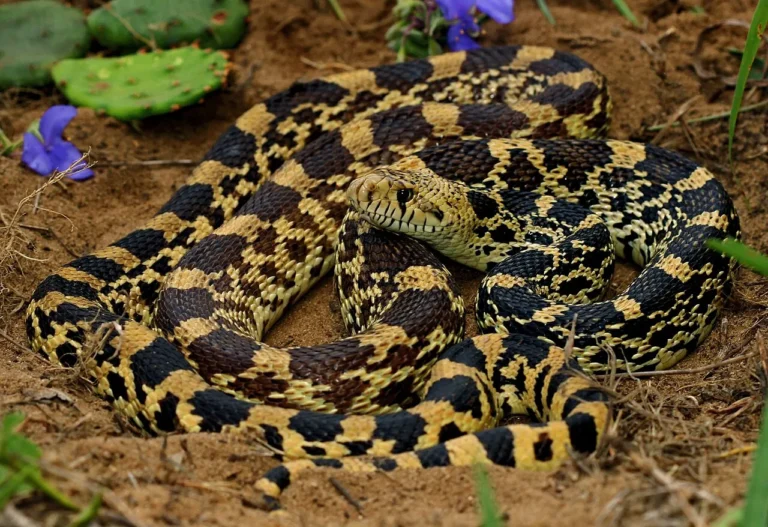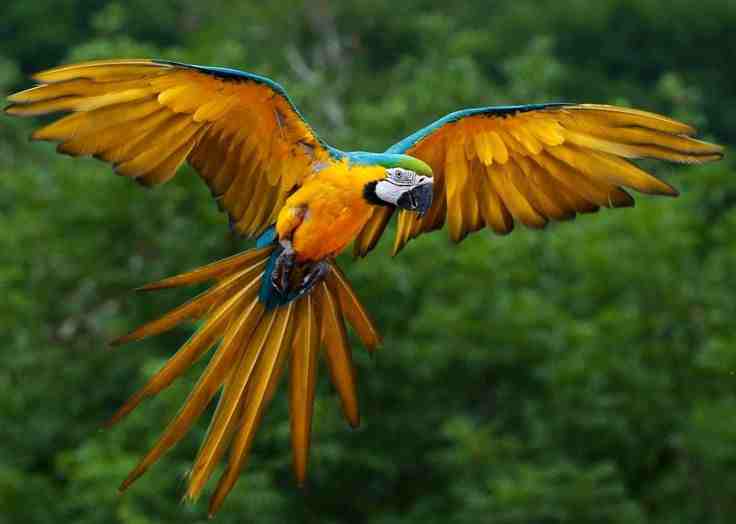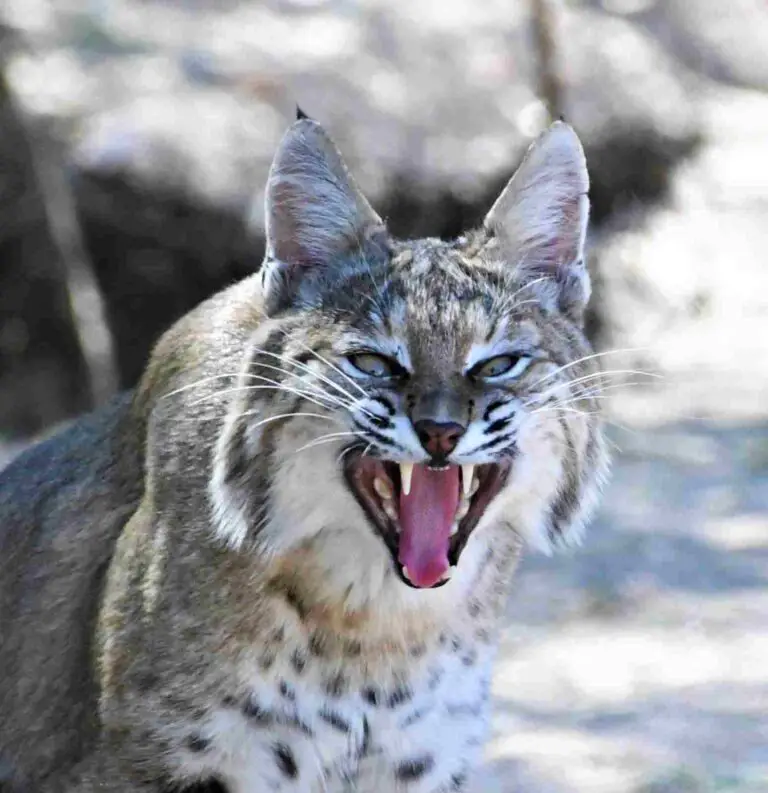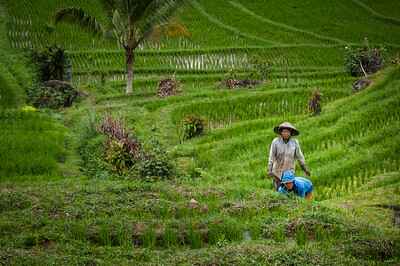11+ Carnivores in The Rainforest Ecosystem Discussed
Carnivores in the rainforest ecosystem are diverse and crucial for maintaining ecological balance. Tigers and jaguars, apex predators, regulate prey populations, while giant condors and harpy eagles scavenge and control other species’ populations. Anacondas, boa constrictors, and piranhas are formidable hunters, while giant anteaters and armadillos contribute to insect control. Pumas and caimans are stealthy predators crucial for ecosystem health. Additionally, the unique Triphyophyllum peltatum adds to the rainforest’s biodiversity with its specialized carnivorous adaptations.
1. Tiger:
The tiger, known scientifically as Panthera tigris, is one of the most iconic carnivores found in the rainforest. Renowned for its majestic appearance and formidable hunting prowess, the tiger is a top predator that commands respect within its ecosystem. Within the dense foliage of the rainforest, the tiger’s distinctive orange coat with dark stripes serves as excellent camouflage, allowing it to stalk its prey with stealth and precision.
As an apex predator, the tiger plays a crucial role in regulating the populations of prey species, thereby maintaining the balance of the rainforest ecosystem. With its powerful muscles and razor-sharp claws, the tiger is capable of bringing down large prey such as deer, wild boar, and even smaller carnivores like monkeys and smaller cats. Its exceptional hunting abilities are complemented by keen senses, including acute hearing and night vision, which enable it to hunt effectively both during the day and at night.
Despite its fearsome reputation, the tiger faces numerous threats in the rainforest, including habitat loss due to deforestation, poaching for its highly prized fur and body parts, and human-wildlife conflict. Conservation efforts are crucial to ensuring the survival of these magnificent creatures in their natural habitat, as they serve as indicators of the overall health of the rainforest ecosystem. Protecting the tiger and its habitat not only preserves biodiversity but also safeguards the vital services that rainforests provide to humanity, such as carbon sequestration, climate regulation, and water purification.
2. Jaguar:
The jaguar, scientifically known as Panthera onca, is another formidable carnivore that prowls the rainforest with stealth and strength. Renowned for its striking spotted coat and muscular build, the jaguar is the largest cat species native to the Americas and holds the title of apex predator in many rainforest ecosystems. With its powerful jaws and razor-sharp teeth, the jaguar is a fearsome hunter capable of taking down a wide range of prey, including capybaras, tapirs, and even caimans.
Like the tiger, the jaguar plays a vital role in regulating the populations of prey species, thereby maintaining the delicate balance of the rainforest ecosystem. Its nocturnal habits and solitary nature make it a mysterious and elusive creature, often shrouded in myth and folklore among indigenous cultures. However, habitat loss and fragmentation due to human activities such as deforestation and agricultural expansion pose significant threats to the survival of jaguars in the wild.
Conservation efforts aimed at protecting jaguars and their habitat are essential for preserving the biodiversity and ecological integrity of the rainforest. By establishing protected areas, implementing anti-poaching measures, and promoting coexistence between jaguars and local communities, conservationists strive to ensure the long-term survival of this iconic species. Moreover, ecotourism initiatives centered around jaguar watching can provide economic incentives for conservation while raising awareness about the importance of preserving these magnificent cats and their habitat.
3. Giant Condor:
The giant condor, also known as the Andean condor (Vultur gryphus), is a majestic and imposing bird of prey that inhabits the skies above the rainforest canopy. With its massive wingspan, which can exceed three meters, the giant condor is one of the largest flying birds in the world. Despite its impressive size, the giant condor is a graceful and agile flyer, effortlessly soaring on thermal updrafts in search of carrion to scavenge.
As a scavenger, the giant condor plays a vital role in the rainforest ecosystem by disposing of carrion and preventing the spread of disease. Its keen eyesight and acute sense of smell enable it to detect carcasses from great distances, allowing it to efficiently locate food sources in the vast expanse of the rainforest. Additionally, the giant condor serves as an important cultural symbol in many indigenous cultures, where it is revered as a messenger between the earthly realm and the spiritual world.
Despite its ecological significance and cultural importance, the giant condor faces numerous threats to its survival, including habitat loss, poaching, and collisions with power lines. Conservation efforts aimed at protecting the giant condor and its habitat are essential for ensuring the long-term viability of this iconic species. By establishing protected areas, implementing measures to reduce human-wildlife conflict, and raising awareness about the importance of conserving biodiversity, conservationists strive to secure a future for the giant condor in the rainforest ecosystem.
4. Anaconda:
The anaconda, scientifically known as Eunectes murinus, is one of the largest and most powerful snakes found in the rainforest. Renowned for its impressive size and formidable strength, the anaconda is a formidable predator that primarily preys on a variety of aquatic and semi-aquatic species, including fish, birds, mammals, and even other reptiles. With its sleek, muscular body and excellent swimming abilities, the anaconda is perfectly adapted to life in the water, where it can lie in wait for hours, patiently stalking its prey before launching a swift and deadly attack.
The anaconda’s ability to swallow prey whole, aided by its incredibly flexible jaws and expandable stomach, allows it to consume prey much larger than itself, making it a fearsome apex predator in its aquatic habitat. Despite its fearsome reputation, anacondas are generally non-aggressive towards humans and prefer to avoid confrontation whenever possible. However, encounters between humans and anacondas can occur, particularly in areas where human activities encroach upon their natural habitat.
Habitat loss, pollution, and hunting for their skins and meat pose significant threats to the survival of anacondas in the wild. Conservation efforts aimed at protecting anacondas and their habitat are crucial for ensuring the long-term viability of this iconic species. By establishing protected areas, implementing sustainable management practices, and raising awareness about the importance of conserving biodiversity, conservationists strive to secure a future for the anaconda in the rainforest ecosystem.
5. Boa Constrictor:
The boa constrictor, scientifically known as Boa constrictor, is a large, non-venomous snake that inhabits the rainforest canopy and understory. With its muscular body and powerful coils, the boa constrictor is a skilled predator capable of ambushing a wide range of prey, including birds, mammals, and reptiles. Unlike venomous snakes that immobilize their prey with venom, boa constrictors use constriction to subdue their victims, wrapping their bodies around them and squeezing until they suffocate.
Despite its intimidating hunting technique, boa constrictors are generally shy and elusive creatures that prefer to avoid human interaction whenever possible. However, encounters between humans and boa constrictors can occur, particularly in areas where human activities encroach upon their natural habitat. While attacks on humans are rare, conflicts may arise when boas are perceived as threats to livestock or pets.
Habitat loss, fragmentation, and persecution by humans pose significant threats to the survival of boa constrictors in the wild. Conservation efforts aimed at protecting boa constrictors and their habitat are essential for ensuring the long-term viability of this iconic species. By establishing protected areas, implementing measures to reduce human-wildlife conflict, and promoting coexistence between boas and local communities, conservationists strive to secure a future for the boa constrictor in the rainforest ecosystem.
6. Piranha:
The piranha is a well-known carnivorous fish inhabiting the rivers and streams of the rainforest. Despite their small size, piranhas are infamous for their sharp teeth and voracious feeding behavior, which often involves swarming and attacking prey in a frenzied manner. Found primarily in South American rivers, piranhas are opportunistic feeders, preying on a variety of aquatic creatures, including fish, insects, crustaceans, and even small mammals or birds that venture too close to the water’s edge.
Piranhas are highly adaptable and thrive in a range of aquatic environments, from fast-flowing rivers to stagnant pools. Their formidable hunting skills and aggressive nature have earned them a fearsome reputation among both locals and outsiders. However, piranhas are an integral part of the rainforest ecosystem, playing a vital role in controlling the populations of smaller fish and contributing to nutrient cycling through their feeding activities.
Despite their ecological importance, piranhas face threats from habitat destruction, pollution, overfishing, and the introduction of non-native species. Conservation efforts aimed at protecting the habitats of piranhas and promoting sustainable fisheries management are essential for ensuring the long-term survival of these iconic fish species. By implementing measures to preserve the integrity of river ecosystems and promoting responsible fishing practices, conservationists strive to maintain the balance of the rainforest ecosystem while safeguarding the diversity of aquatic life, including piranhas.
7. Harpy Eagle:
The harpy eagle (Harpia harpyja) is a majestic and powerful bird of prey that inhabits the upper canopy of the rainforest. With its striking appearance, including a distinctive double crest of feathers on its head, the harpy eagle is often regarded as the “king of the jungle” and holds a special place in the mythology and folklore of indigenous cultures throughout its range. Renowned for its exceptional eyesight, powerful talons, and swift flight, the harpy eagle is a formidable hunter capable of capturing a wide range of prey, including monkeys, sloths, birds, and reptiles.
As an apex predator, the harpy eagle plays a crucial role in regulating the populations of prey species and shaping the dynamics of the rainforest ecosystem. Its presence serves as an indicator of the health and integrity of the forest habitat, making it a focus of conservation efforts aimed at preserving biodiversity. However, habitat loss, fragmentation, and hunting pose significant threats to the survival of harpy eagles in the wild, leading to population declines in many parts of their range.
Conservation efforts aimed at protecting harpy eagles and their habitat are essential for ensuring the long-term viability of this iconic species. By establishing protected areas, implementing measures to reduce habitat destruction and human-wildlife conflict, and raising awareness about the importance of conserving biodiversity, conservationists strive to secure a future for the harpy eagle in the rainforest ecosystem.
8. Giant Anteater:
The giant anteater (Myrmecophaga tridactyla) is a unique and fascinating carnivore found in the rainforest, known for its distinctive appearance and specialized feeding habits. With its elongated snout, long tongue, and bushy tail, the giant anteater is well-adapted to its insect-rich habitat. Despite its name, the giant anteater primarily feeds on ants and termites, using its powerful claws to tear open termite mounds and anthills before lapping up the insects with its sticky tongue.
As a specialized insectivore, the giant anteater plays a crucial role in controlling insect populations in the rainforest ecosystem. Its foraging activities contribute to nutrient cycling and soil aeration, making it an important ecological engineer in its habitat. Despite its ecological significance, the giant anteater faces numerous threats to its survival, including habitat loss, roadkill, and hunting for its meat and fur.
Conservation efforts aimed at protecting giant anteaters and their habitat are essential for ensuring the long-term viability of this iconic species. By establishing protected areas, implementing measures to reduce habitat destruction and human-wildlife conflict, and promoting coexistence between giant anteaters and local communities, conservationists strive to secure a future for the giant anteater in the rainforest ecosystem.
9. Armadillo:
The armadillo is a small, armored mammal that inhabits the rainforest floor, known for its unique appearance and behavior. With its bony plates and leathery skin, the armadillo is well-protected against predators and environmental hazards, allowing it to thrive in a variety of habitats, including rainforests. Despite its armored exterior, armadillos are primarily insectivores, using their powerful claws to dig for insects, grubs, and other invertebrates in the forest soil.
Armadillos play an important role in the rainforest ecosystem as seed dispersers and soil aerators, contributing to the health and diversity of plant communities. Additionally, armadillos serve as prey for larger carnivores, helping to support the populations of predators such as jaguars and ocelots. However, armadillos are vulnerable to habitat loss, roadkill, and hunting for their meat and shells, which are sometimes used for traditional crafts.
Conservation efforts aimed at protecting armadillos and their habitat are essential for ensuring the long-term survival of this unique mammal species. By establishing protected areas, implementing measures to reduce habitat destruction and human-wildlife conflict, and raising awareness about the importance of conserving biodiversity, conservationists strive to secure a future for armadillos in the rainforest ecosystem.
10. Puma:
The puma, also known as the cougar or mountain lion (Puma concolor), is a large carnivorous mammal that inhabits a wide range of habitats, including the rainforest. Renowned for its stealth, agility, and solitary nature, the puma is an apex predator capable of preying on a variety of species, including deer, wild boar, and smaller mammals. With its powerful limbs, sharp claws, and keen senses, the puma is a formidable hunter that plays a crucial role in regulating prey populations and maintaining the balance of the rainforest ecosystem.
Despite its adaptability and wide distribution, pumas face numerous threats to their survival, including habitat loss, fragmentation, poaching, and human-wildlife conflict. Encounters between pumas and humans can sometimes lead to conflicts, particularly in areas where human activities encroach upon their natural habitat. Conservation efforts aimed at protecting pumas and their prey species are essential for ensuring the long-term viability of this iconic apex predator in the rainforest ecosystem.
11. Frog:
Frogs are diverse and abundant amphibians found throughout the rainforest, playing important roles in both terrestrial and aquatic ecosystems. As key indicators of environmental health, frogs are sensitive to changes in temperature, humidity, and pollution, making them valuable bioindicators for monitoring the health of the rainforest ecosystem. Frogs play vital roles in controlling insect populations, serving as both predators and prey for a variety of species.
In addition to their ecological significance, frogs are also important culturally and economically. Many indigenous cultures view frogs as symbols of fertility, transformation, and spiritual connection to the natural world. Furthermore, frogs contribute to the pharmaceutical industry through their unique skin secretions, which contain compounds with potential medicinal properties. However, frogs are facing unprecedented threats from habitat destruction, pollution, climate change, and disease, resulting in population declines and extinctions worldwide.
Conservation efforts aimed at protecting frog habitats, mitigating threats, and raising awareness about the importance of amphibian conservation are crucial for ensuring the survival of these vital species in the rainforest. By preserving the integrity of rainforest ecosystems and promoting sustainable land use practices, conservationists strive to safeguard the diversity of frog species and their invaluable contributions to the health and functioning of the rainforest ecosystem.
12. Caiman:
The caiman is a crocodilian reptile found in the rivers, lakes, and wetlands of the rainforest, playing a key role in aquatic ecosystems as a top predator. Caimans are closely related to alligators and crocodiles, sharing many physical and behavioral traits with their larger relatives. With their armored bodies, powerful jaws, and keen senses, caimans are formidable hunters capable of preying on a variety of aquatic and terrestrial species, including fish, birds, mammals, and even other reptiles.
As apex predators, caimans play a crucial role in regulating the populations of prey species and shaping the dynamics of the rainforest ecosystem. Their presence helps maintain the balance of aquatic food webs and contributes to the overall health and resilience of wetland habitats. Despite their ecological importance, caimans face threats from habitat loss, pollution, hunting, and human-wildlife conflict, particularly in areas where they come into contact with human populations.
Conservation efforts aimed at protecting caimans and their habitat are essential for ensuring the long-term viability of this iconic reptile species in the rainforest. By establishing protected areas, implementing measures to reduce habitat destruction and human-caiman conflict, and promoting coexistence between caimans and local communities, conservationists strive to secure a future for caimans in the rainforest ecosystem.
13. Triphyophyllum Peltatum:
Triphyophyllum peltatum is a unique carnivorous plant species native to the rainforest understory, known for its specialized adaptations for capturing and digesting prey. Belonging to the family Dioncophyllaceae, Triphyophyllum peltatum possesses highly modified leaves that function as intricate traps for small insects and other invertebrates. These traps consist of sticky surfaces and inward-pointing hairs that prevent prey from escaping once they come into contact with the plant.
Unlike many other carnivorous plants that rely on passive trapping mechanisms, Triphyophyllum peltatum exhibits active movement in response to prey stimuli. When an insect or other small organism lands on its leaves, the plant undergoes rapid movement, closing its traps around the prey and initiating the digestion process. This unique adaptation allows Triphyophyllum peltatum to supplement its nutrient intake in the nutrient-poor soils of the rainforest understory.
Although Triphyophyllum peltatum is a fascinating example of convergent evolution with other carnivorous plants, it is also relatively rare and poorly understood compared to more well-known species such as Venus flytraps or pitcher plants. Habitat destruction, deforestation, and illegal collection for horticultural purposes pose significant threats to the survival of Triphyophyllum peltatum in its natural habitat.
Conservation efforts aimed at protecting the rainforest ecosystems where Triphyophyllum peltatum occurs are crucial for ensuring the long-term survival of this unique carnivorous plant species. By preserving its habitat and raising awareness about its ecological importance, conservationists strive to secure a future for Triphyophyllum peltatum and other rare and endangered species in the rainforest ecosystem.
*Summary
Tiger:
Majestic apex predator with distinctive orange coat and dark stripes.
Plays crucial role in regulating prey populations.
Faces threats from habitat loss and poaching.
Jaguar:
Largest cat species in the Americas, apex predator.
Renowned for striking appearance and stealthy hunting.
Threatened by habitat loss, poaching, and human-wildlife conflict.
Giant Condor:
Massive bird of prey, scavenger in rainforest canopy.
Plays vital role in nutrient cycling and cultural significance.
Threatened by habitat loss and collisions with power lines.
Anaconda:
Large, powerful snake primarily preying on aquatic species.
Threatened by habitat loss, pollution, and hunting.
Boa Constrictor:
Non-venomous snake, ambush predator in rainforest.
Important for controlling prey populations.
Vulnerable to habitat loss and persecution.
Piranha:
Carnivorous fish known for sharp teeth and aggressive feeding.
Plays role in controlling aquatic populations.
Faces threats from habitat destruction and overfishing.
Harpy Eagle:
Majestic bird of prey, apex predator in upper canopy.
Important for regulating prey populations.
Threatened by habitat loss, hunting, and human-wildlife conflict.
Giant Anteater:
Unique insectivore with specialized feeding habits.
Plays role in controlling insect populations.
Threatened by habitat loss and hunting.
Armadillo:
Small, armored mammal with important ecological roles.
Contributes to seed dispersal and soil health.
Vulnerable to habitat loss, roadkill, and hunting.
Puma:
Stealthy apex predator, capable of preying on various species.
Faces threats from habitat loss, poaching, and human-wildlife conflict.
Frog:
Diverse amphibians serving as bioindicators and prey.
Important for controlling insect populations.
Vulnerable to habitat loss, pollution, and disease.
Caiman:
Crocodilian reptile, apex predator in aquatic habitats.
Crucial for maintaining aquatic food webs.
Threatened by habitat loss and human-caiman conflict.
Triphyophyllum Peltatum:
Unique carnivorous plant with specialized trapping mechanisms.
Supplements nutrient intake in nutrient-poor soils.
Threatened by habitat destruction and illegal collection.
| Carnivores in the Rainforest | Summary |
| Tiger |
Majestic apex predator, crucial for regulating prey populations, threatened by habitat loss and poaching.
|
| Jaguar |
Largest cat species in the Americas, known for its striking appearance and stealthy hunting, threatened by habitat loss, poaching, and human-wildlife conflict.
|
| Giant Condor |
Massive scavenging bird, important for nutrient cycling and cultural significance, threatened by habitat loss and collisions with power lines.
|
| Anaconda |
Large, powerful snake preying on aquatic species, threatened by habitat loss, pollution, and hunting.
|
| Boa Constrictor |
Non-venomous snake, ambush predator in rainforest, important for controlling prey populations, vulnerable to habitat loss and persecution.
|
| Piranha |
Carnivorous fish with sharp teeth, plays role in controlling aquatic populations, faces threats from habitat destruction and overfishing.
|
| Harpy Eagle |
Majestic apex predator in upper canopy, important for regulating prey populations, threatened by habitat loss, hunting, and human-wildlife conflict.
|
| Giant Anteater |
Unique insectivore with specialized feeding habits, contributes to controlling insect populations, threatened by habitat loss and hunting.
|
| Armadillo |
Small, armored mammal with important ecological roles, contributes to seed dispersal and soil health, vulnerable to habitat loss, roadkill, and hunting.
|
| Puma |
Stealthy apex predator capable of preying on various species, faces threats from habitat loss, poaching, and human-wildlife conflict.
|
| Frog |
Diverse amphibians serving as bioindicators and prey, important for controlling insect populations, vulnerable to habitat loss, pollution, and disease.
|
| Caiman |
Crocodilian apex predator crucial for maintaining aquatic food webs, threatened by habitat loss and human-caiman conflict.
|
| Triphyophyllum Peltatum |
Unique carnivorous plant with specialized trapping mechanisms, supplements nutrient intake in nutrient-poor soils, threatened by habitat destruction and illegal collection.
|
Related FAQs
